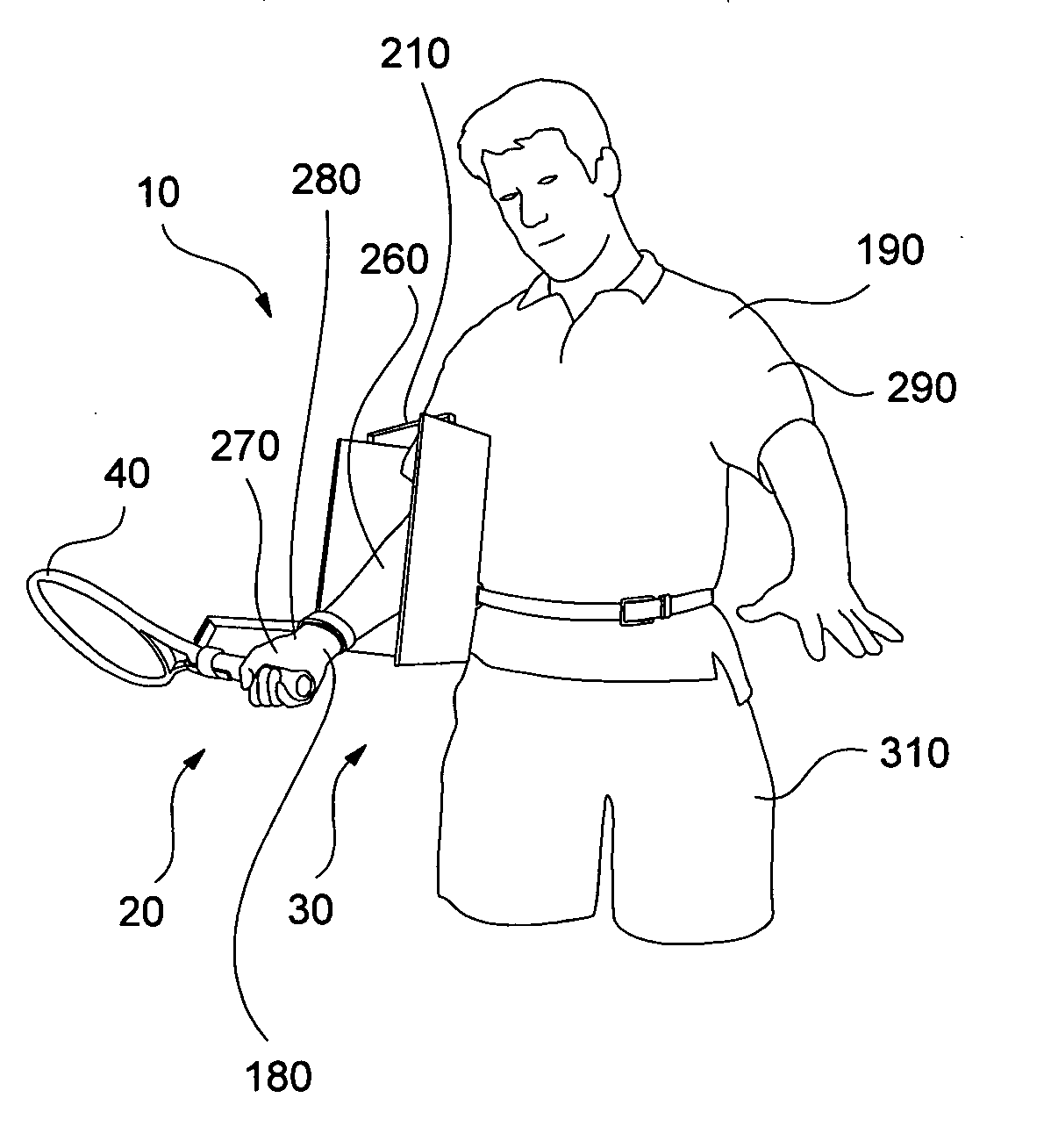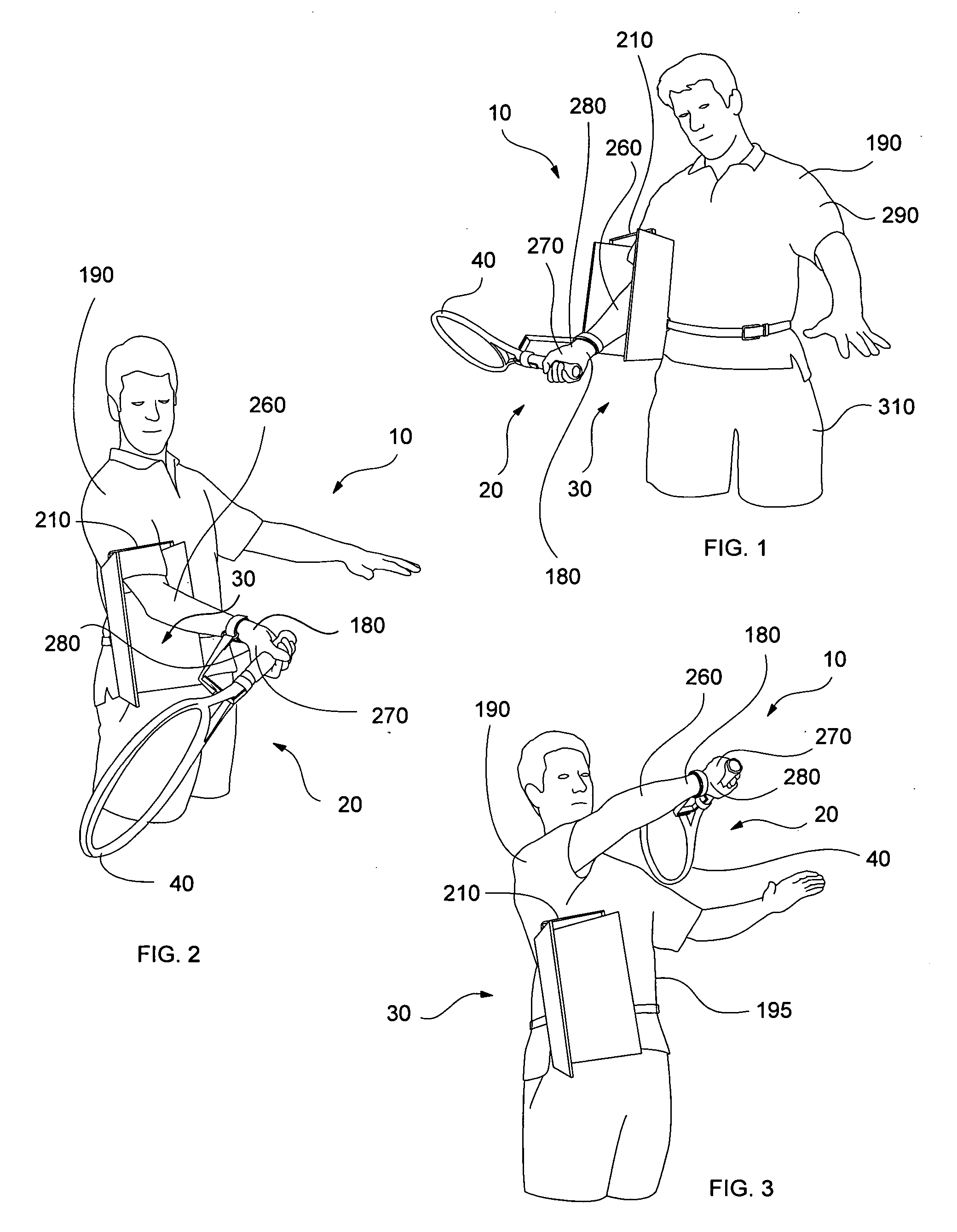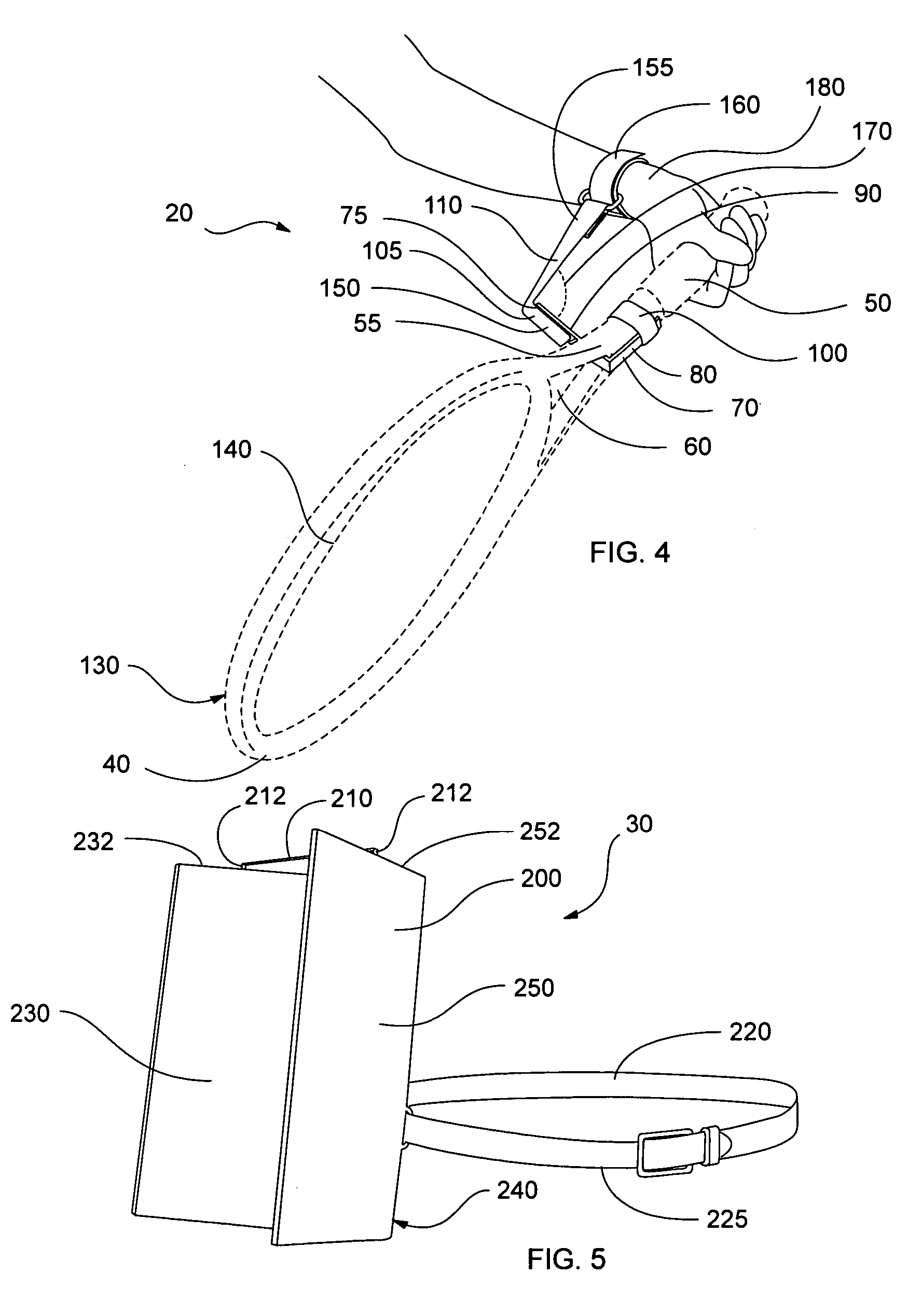Tennis training apparatus and method of use thereof
a training apparatus and tennis technology, applied in the field of tennis training equipment, can solve the problems of reducing the likelihood significant inconsistency, and not maintaining the hand position fully backward-extended, so as to reduce the risk of developing tennis elbow, and reduce the effect of flexural movemen
- Summary
- Abstract
- Description
- Claims
- Application Information
AI Technical Summary
Benefits of technology
Problems solved by technology
Method used
Image
Examples
Embodiment Construction
[0034] In describing the preferred and selected alternate embodiments of the present invention, as illustrated in FIGS. 1-6, specific terminology is employed for the sake of clarity. The invention, however, is not intended to be limited to the specific terminology so selected, and it is to be understood that each specific element includes all technical equivalents that operate in a similar manner to accomplish similar functions.
[0035] Referring now to FIGS. 1-5, the present invention in a preferred embodiment comprises tennis training apparatus 10 and associated method of use thereof, wherein tennis training apparatus 10 preferably comprises racket angulation restraining component 20 and plate restraining component 30. Racket angulation component 30 preferably comprises bracket 70, restraining strap 110 and wrist band 160, wherein restraining strap 110 preferably forms angle 170 when secured to bracket 70 and wrist band 160. In concert with racket angulation restraining component 2...
PUM
 Login to View More
Login to View More Abstract
Description
Claims
Application Information
 Login to View More
Login to View More - R&D
- Intellectual Property
- Life Sciences
- Materials
- Tech Scout
- Unparalleled Data Quality
- Higher Quality Content
- 60% Fewer Hallucinations
Browse by: Latest US Patents, China's latest patents, Technical Efficacy Thesaurus, Application Domain, Technology Topic, Popular Technical Reports.
© 2025 PatSnap. All rights reserved.Legal|Privacy policy|Modern Slavery Act Transparency Statement|Sitemap|About US| Contact US: help@patsnap.com



